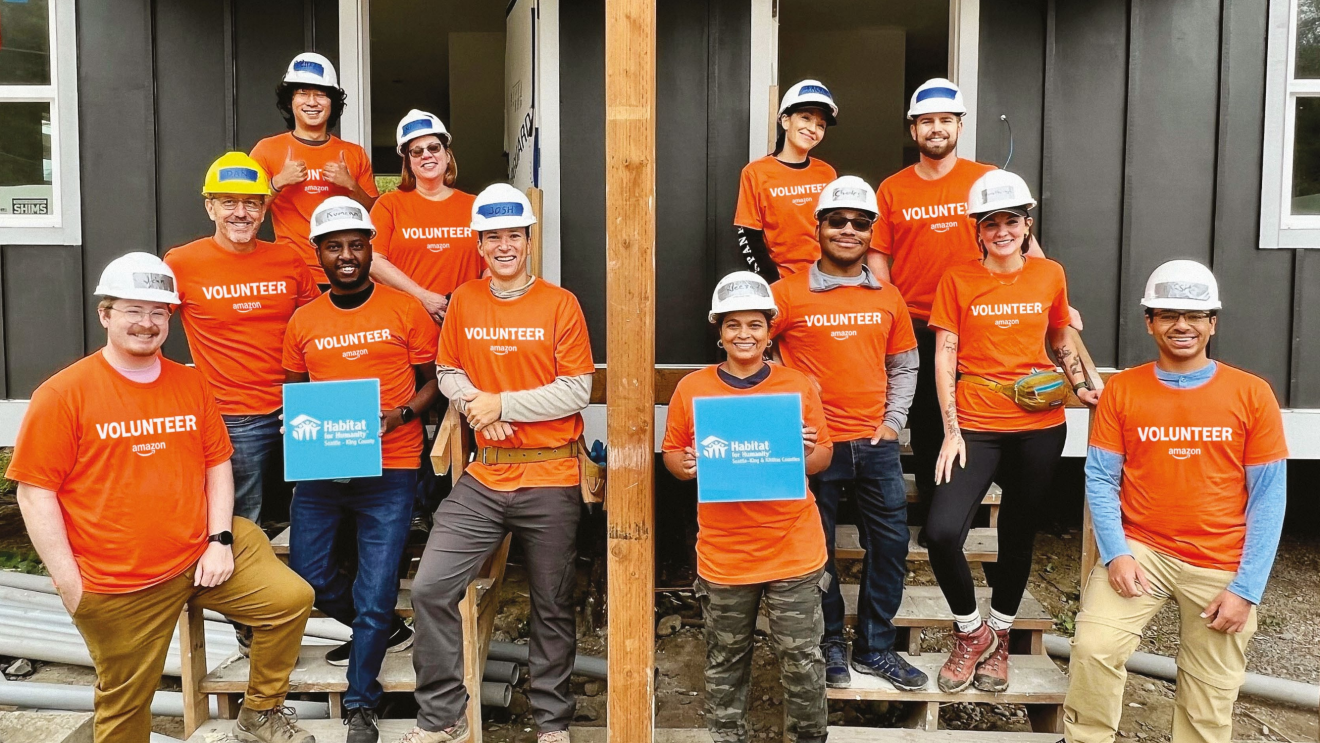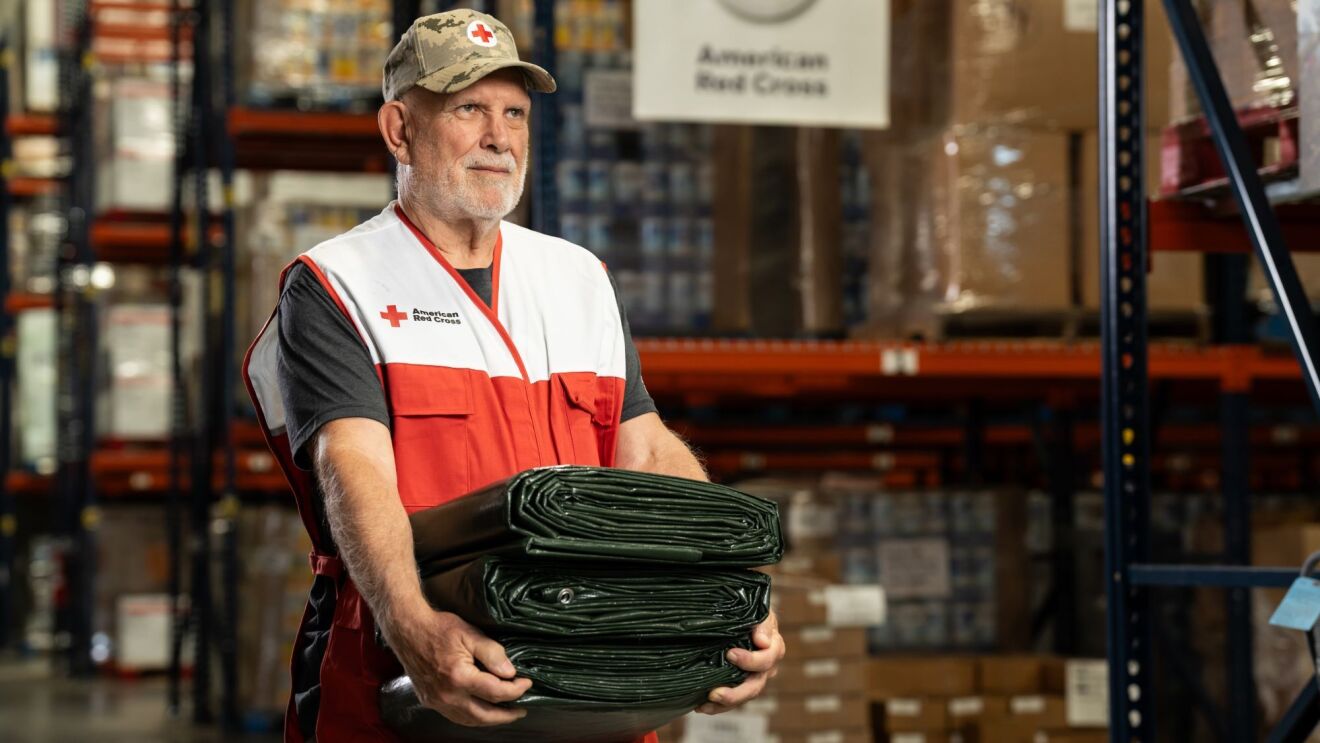I was born and raised in Puerto Rico where hurricanes are a common occurrence. I experienced these disasters firsthand, and watched how organizations like the Red Cross and members of the community worked together to rebuild. I grew up knowing how important it was to be prepared when disaster strikes. What I didn’t know at that time was how that preparedness would support my career in years to come.
I started at Amazon in 2016 as a senior technical program manager building software to automate royalties for Prime Video. I was a year into that role when Hurricane Maria hit Puerto Rico, and I felt compelled to help. I emailed the Seattle office email list to rally support, and employees pointed me in the direction of Bettina Stix, who is now director of Global Product and Volunteering for Amazon in the Community.
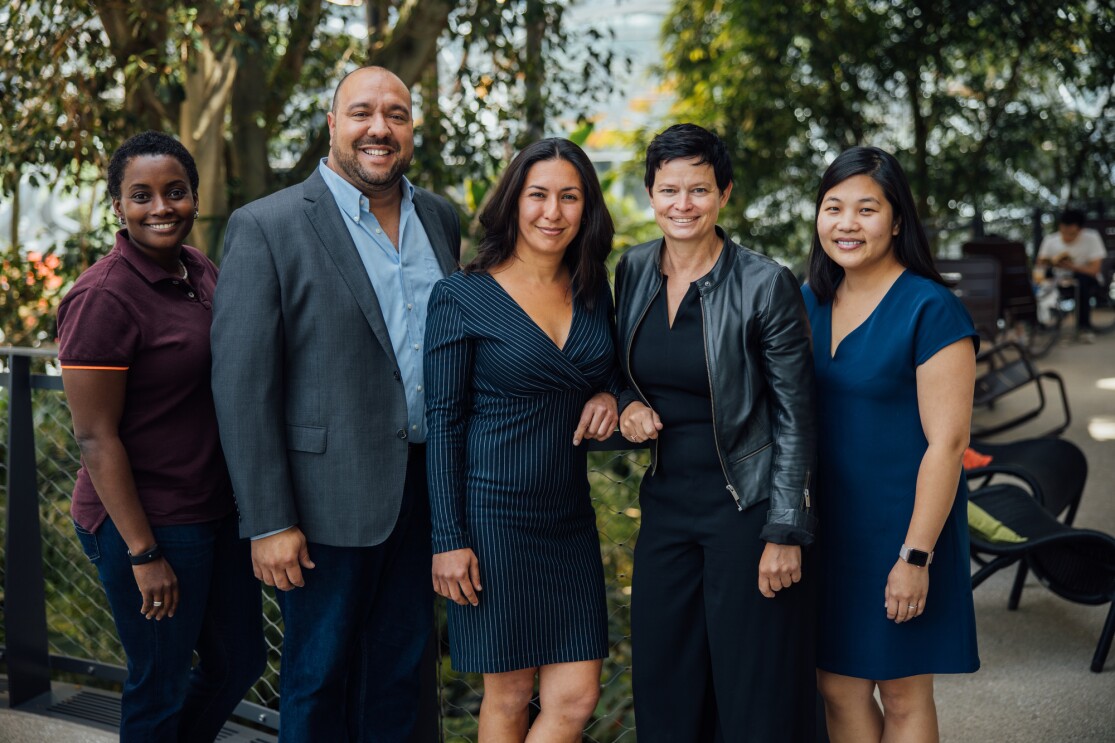 The Disaster Relief team, (left to right) Sam Porter, Abe Diaz, Seema Ramchandani, Bettina Stix, and Trang-Thien Tran.
The Disaster Relief team, (left to right) Sam Porter, Abe Diaz, Seema Ramchandani, Bettina Stix, and Trang-Thien Tran. Bettina had just created a new program called Disaster Relief to improve Amazon's support for communities affected by natural disasters. I reached out to her and she told me they were getting ready to send their very first plane to Puerto Rico to deliver supplies for those affected by the storm, and she welcomed me to join the efforts as a volunteer. I took two weeks away from my work with Prime Video to help coordinate the packing of the plane and delivery of supplies on the ground—it was an incredible experience. Immediately after we got back, Bettina asked me if I wanted to do it all over again. My answer was a resounding yes. Exactly a week later we landed in the U.S. Virgin Islands with our second plane.
I was just a volunteer at that time, but a couple of years later, I had the opportunity to join Bettina’s team full time. I took the leap from my role as a Prime Video technical program manager to join Disaster Relief. I’m now a principal technical product manager on the team where I organize large-scale disaster relief efforts around the world using Amazon's products, logistics networks, and technology. We’ve participated in over 108 disaster relief efforts and donated more than 23 million items so far, and we’re still working every day to support more communities.
Here’s an inside look at how my team activates rapid relief efforts to support communities in the wake of disasters all around the world.
 A Team Rubicon volunteer delivers Amazon-donated relief following a massive earthquake and tsunami in Indonesia.
A Team Rubicon volunteer delivers Amazon-donated relief following a massive earthquake and tsunami in Indonesia.We have two different types of disaster responses: reactive and proactive. Reactive relief is when a “no notice” event like a tornado or an earthquake happens, and we need to jump into action to find out what’s needed, then consolidate, pack, and deliver the items.
 Photo by DAVE QUIGG
Photo by DAVE QUIGGFor our reactive efforts, we monitor the news and immediately reach out to our relief organization partners like the Red Cross when a major disaster strikes. We start by asking them what they’re doing, what unmet needs they have, and how we can support.
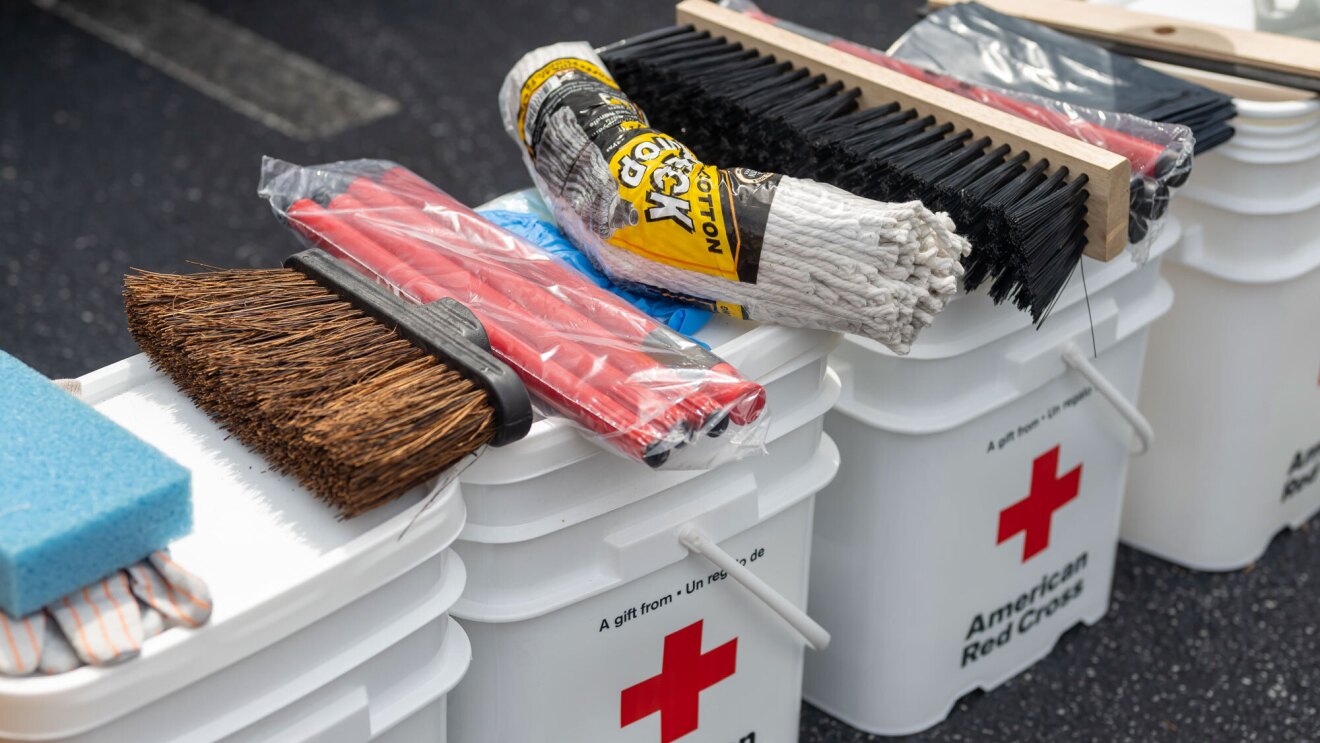
In most cases, it takes a couple of days for these relief organizations to fully understand where the needs are. For example, sometimes one part of the town doesn't need diapers, but the other side of town needs a lot of them. They gather all of that information and send us a list of specific requests.

From there, we start locating the products in our fulfillment centers, then we set a plan for how we will consolidate them and deliver them where they need to be.
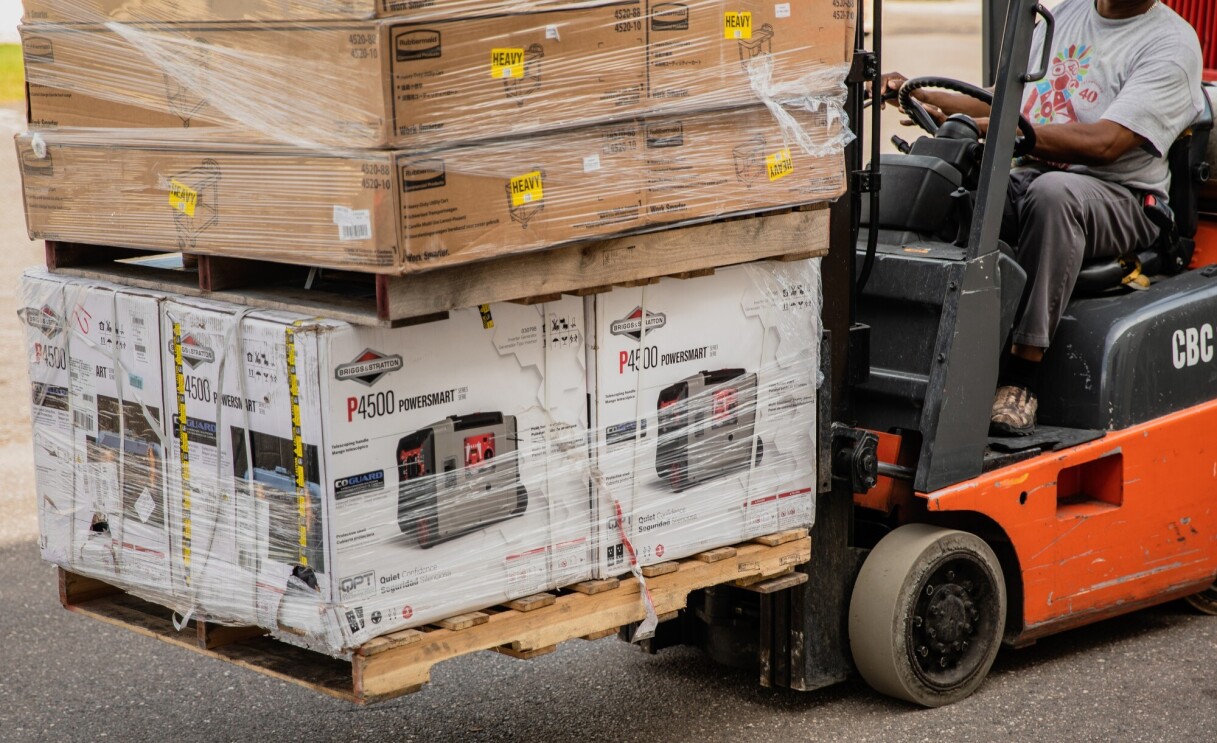
Employees at fulfillment centers help us pack the items into trucks and planes to ship them wherever they’re needed.

Our proactive efforts are powered by data. We aim to anticipate upcoming disaster requests and the necessary items we’ll need to support. While every disaster is different, we now have a better understanding of which items communities will need most when certain disasters strike, so we work with our relief partners to pre-pack items so they’re ready when they need them.

We store these relief items at our Disaster Relief Hubs, which are designated disaster-relief sections inside select Amazon fulfillment centers. These prepositioning hubs are strategically located in areas that help us meet the needs of our partners. We currently have eight hubs across the U.S., Japan, and Australia, with more launching soon.
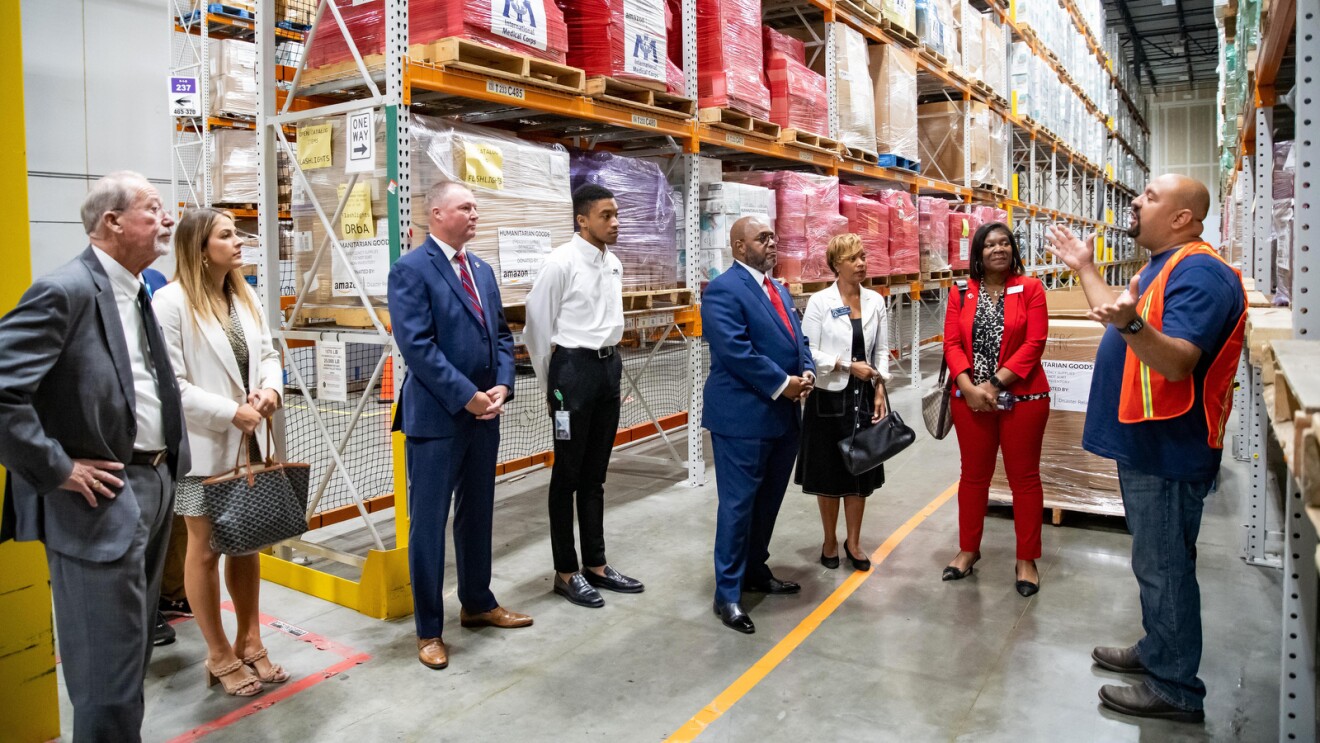
We activated our proactive strategy to support during Hurricane Fiona in Puerto Rico and Hurricane Ian in Florida in 2022. We had hundreds of thousands of high-priority items like water filters, tarps, and medical supplies in stock at our Atlanta hub and ready to pack onto trucks and an Amazon Air 767 to send to these locations.
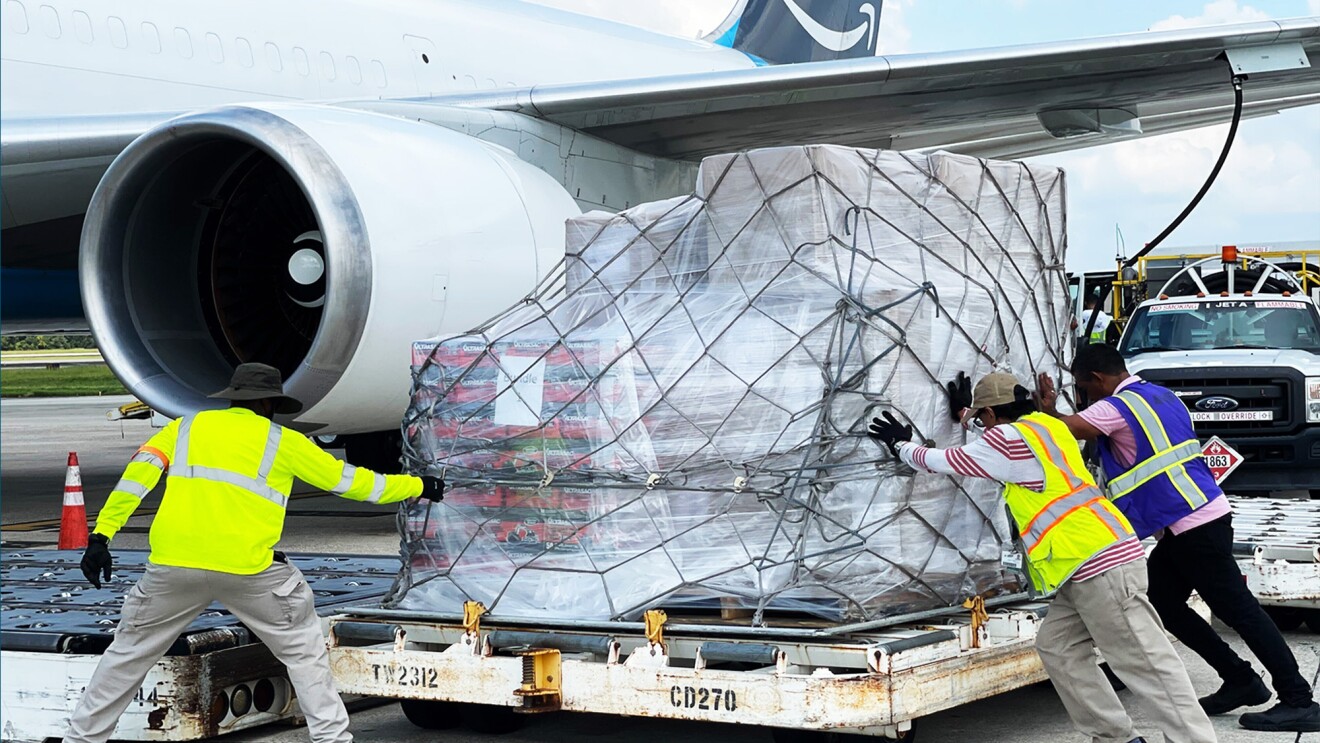
We recently expanded that hub in Atlanta, more than doubling its capacity to include more than 3 million relief items ahead of hurricane season this year.
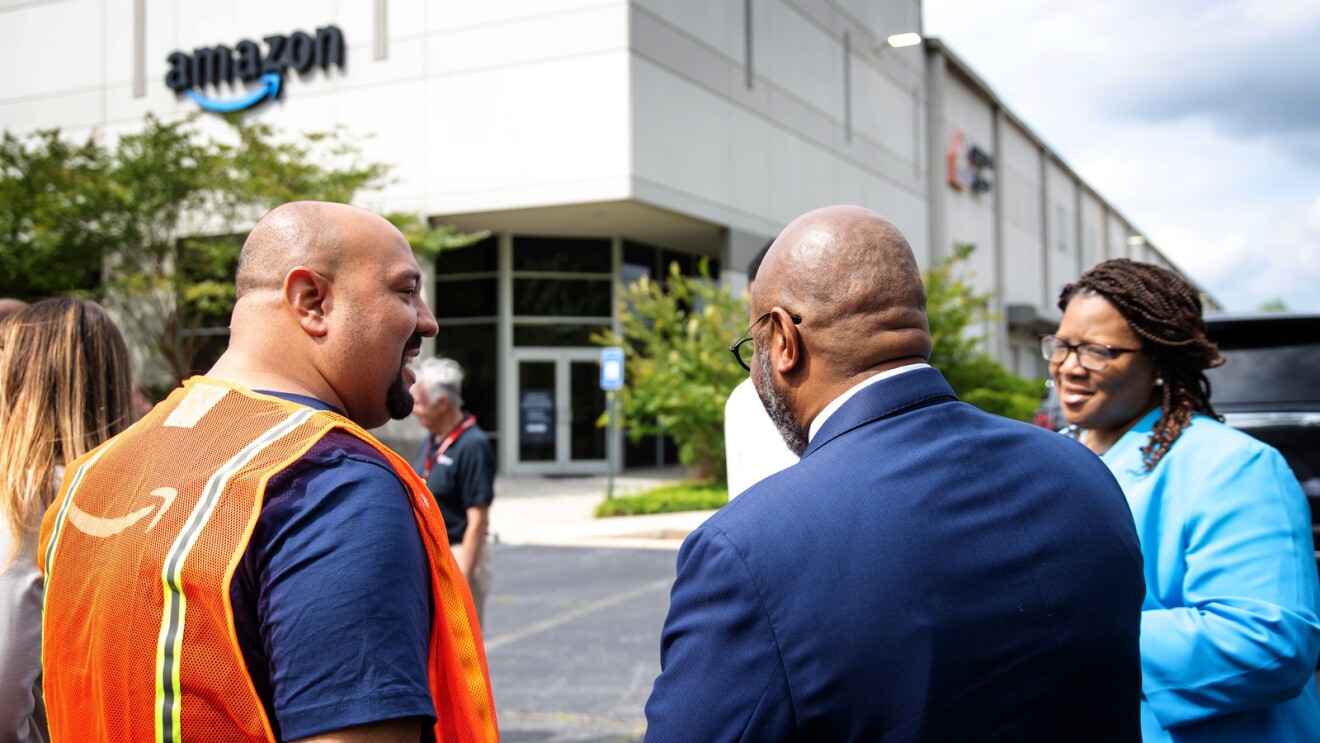
We also have what we call Logistical hubs. These hubs play an important role in helping us quickly reach communities around the world because they allow relief partners sort and redistribute items quickly. We opened Logistical Hubs in Poland and Slovakia after the Ukraine war broke out, then opened two more in Florida after Hurricane Ian, and one more in Turkiye after the recent earthquake.
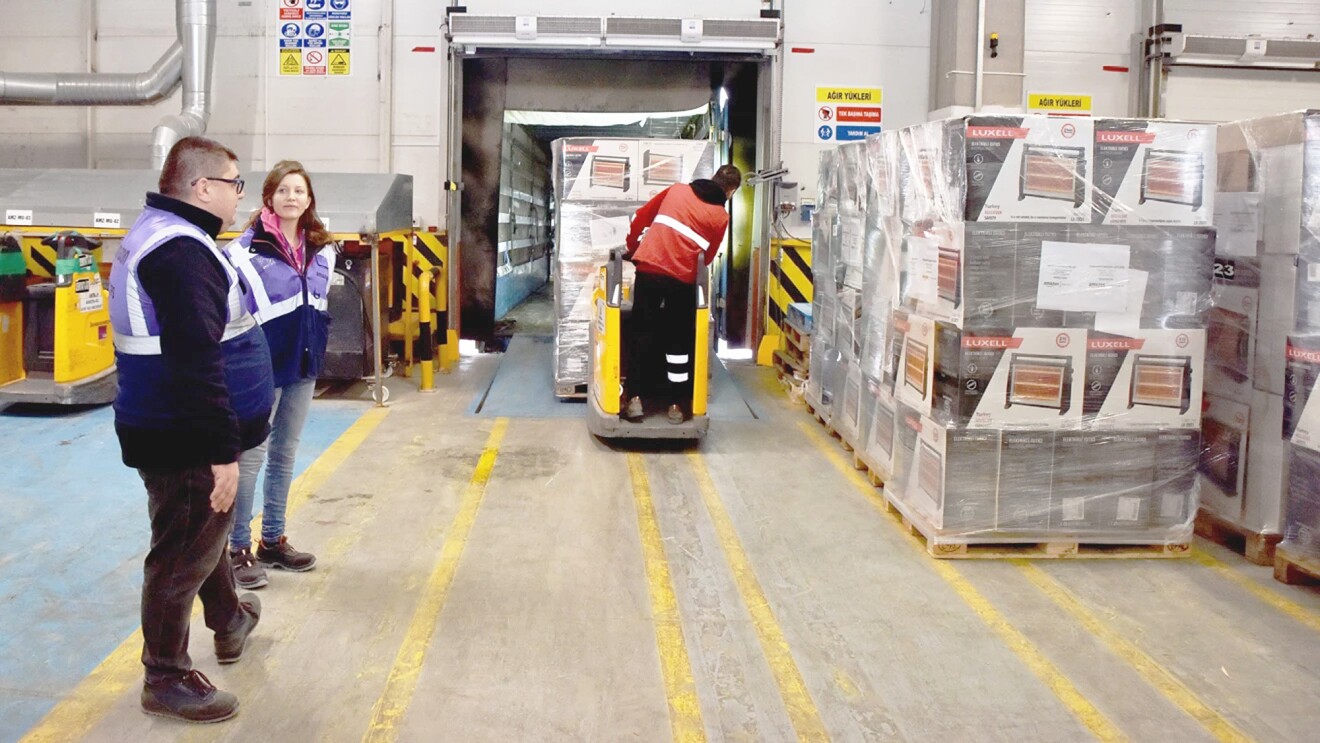
After the earthquake, part of my team in Seattle switched their hours to match the local time in Türkiye to make sure we had 24-hour coverage. We had trucks going from our facilities in Istanbul down to a very remote region of the country within days and two relief planes days after. It was like a miracle of modern logistics.

While my team covers the delivery of essential relief items, Amazon Web Services (AWS) also has a team called AWS Disaster Response that develops and tests new innovations using cloud technology to enable more efficient disaster response and support for humanitarian efforts. Some examples of this team's work include using drone technology to assess damage after major hurricanes, and providing technical support during the war in Ukraine, including setting up virtual schools to help students continue learning.
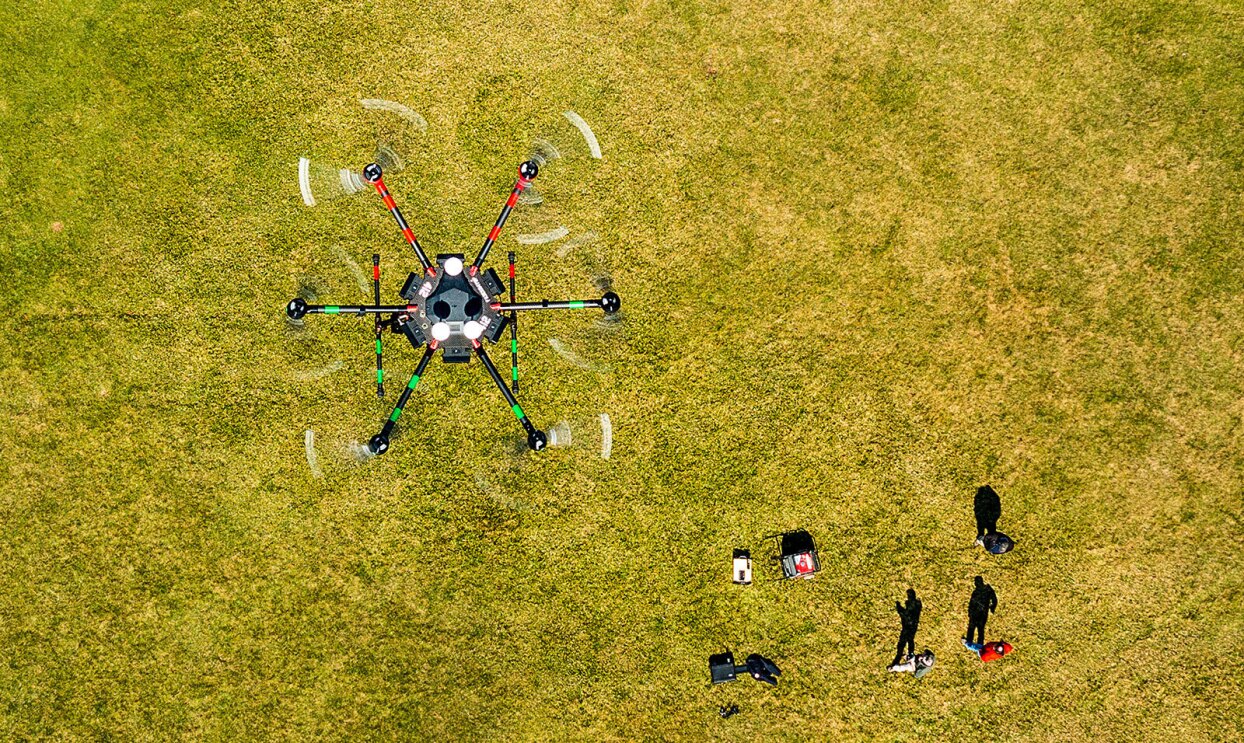
AWS developed a Disaster Response Vehicle to innovate and test new ways to use the cloud to help after major natural disasters. The vehicle is complete with rugged off-road capabilities, which allow it to bring the power of the cloud to disconnected environments to ensure access to communications and computing technology. It was actually stored at my house for a day while it was on its way to another location. I had a lot of neighbors stop to ask about it.
01 / 02
At the end of the day, whether it’s a reactive effort where we figure out needs as we go, or a proactive effort where we have the items at the ready, the most important part of our work is finding out what communities need and getting it to them as quickly as possible.
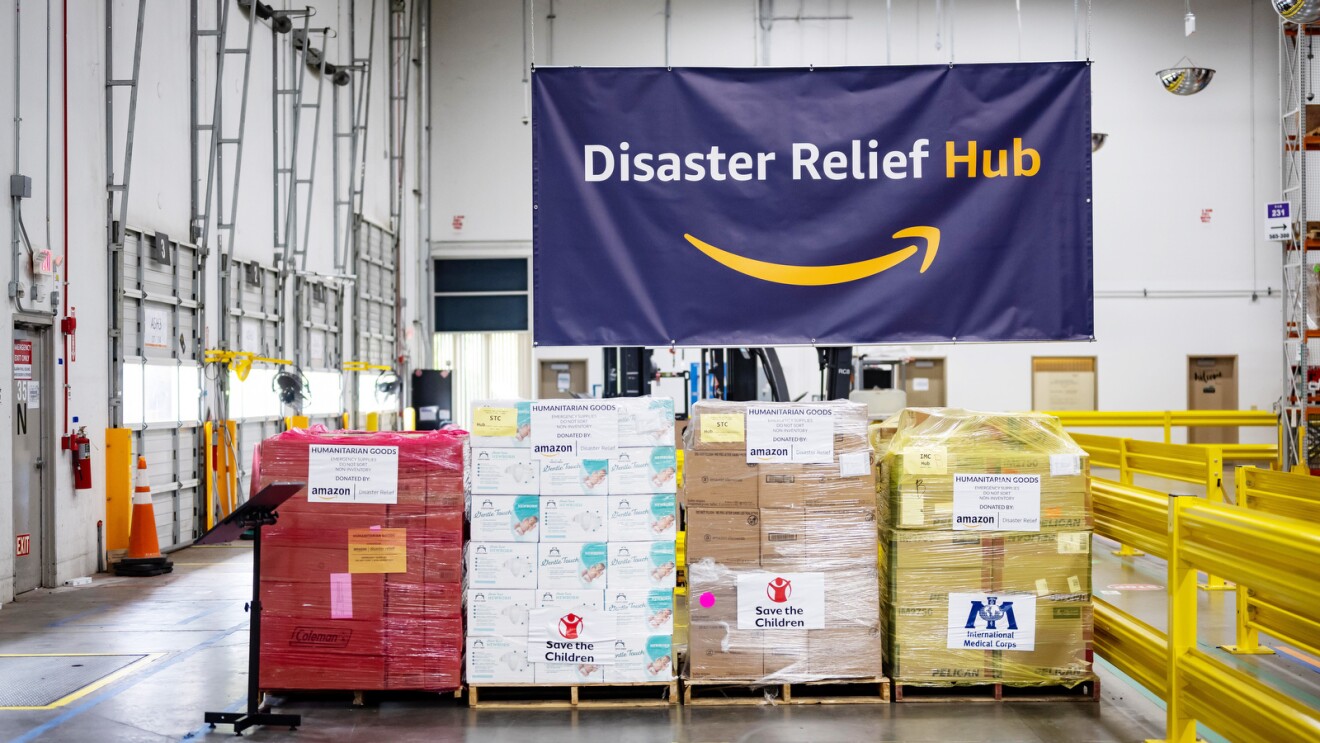
We’re particularly careful to send only what is needed. We don't want to cause what we call a “second disaster,” which would mean sending donations our partners and the community didn’t ask for.

It takes a lot of work and a huge team coordination to consistently pull off these efforts, but I’m constantly motivated by the impact we’re able to have. I remember seeing photos of the pallets of products coming in to the airport for that first relief effort in Puerto Rico, and I realized Amazon employees had written on them to share messages of support for their families and communities back home. Moments like that are so powerful. Not only are we supporting the organizations that help communities rebuild after disasters, but we're also giving our employees an opportunity to help when disasters hit close to home.

I've been really fortunate to have had the opportunity to help grow this program. Our processes and capabilities have come so far since that first relief effort I joined in 2017, and we’ll keep innovating and evolving to offer help where and when it’s needed most.
Trending news and stories
- Everything you need to know about ‘Thursday Night Football’ on Prime Video
- ‘Thursday Night Football’ 2025 schedule: How to watch live on Prime Video
- How to watch ‘Oh. What. Fun.’ on Prime Video
- How Amazon Pharmacy has helped customers save more than $100 million on prescription medications like GLP-1s and insulin






